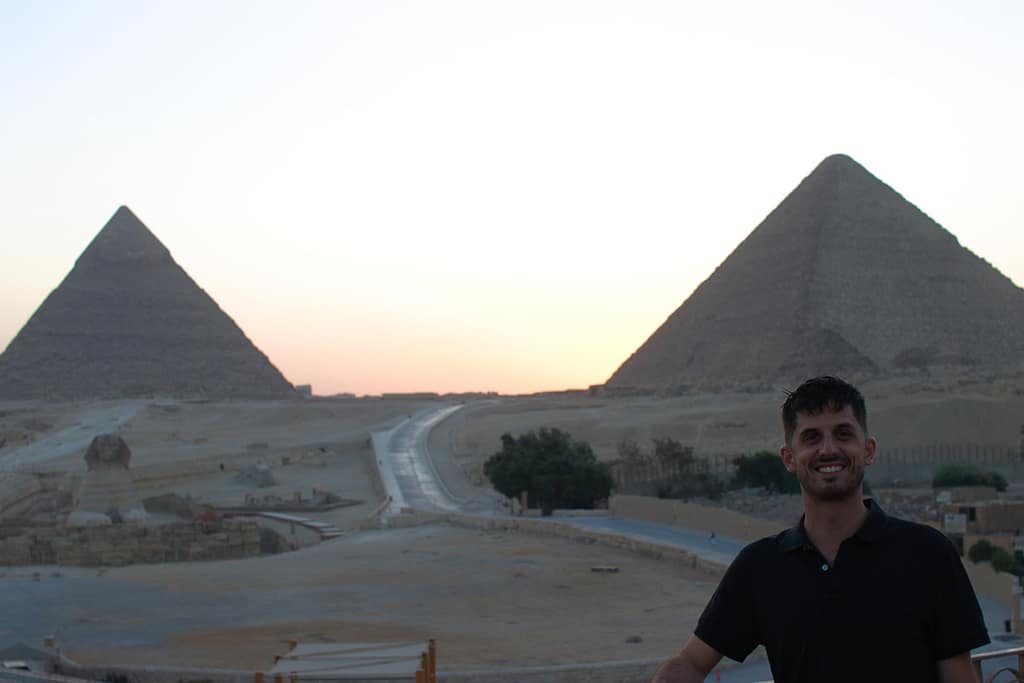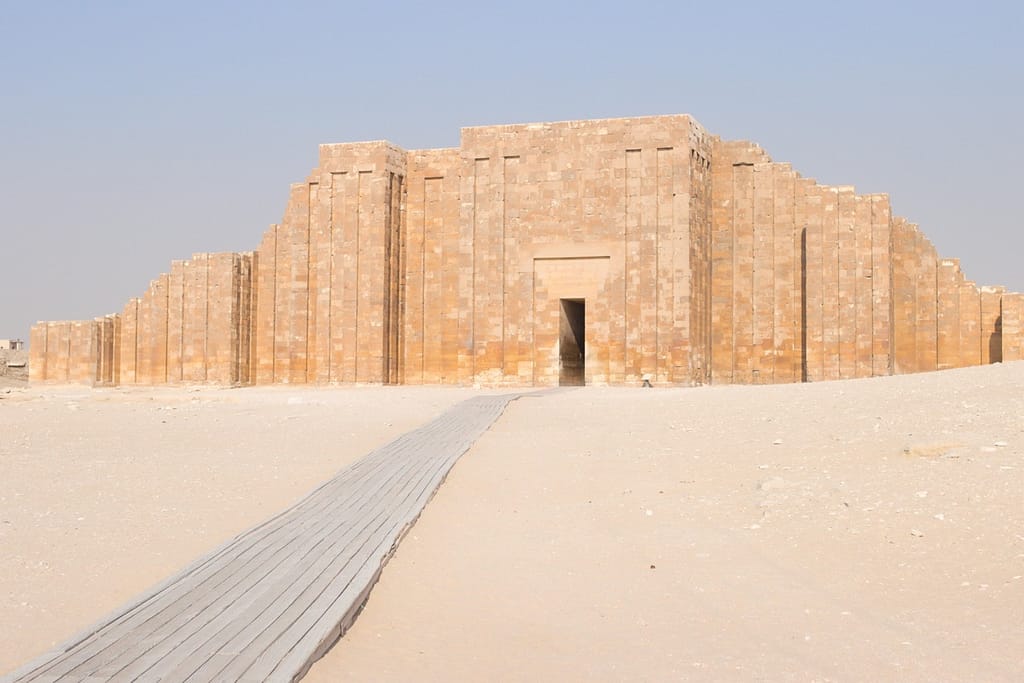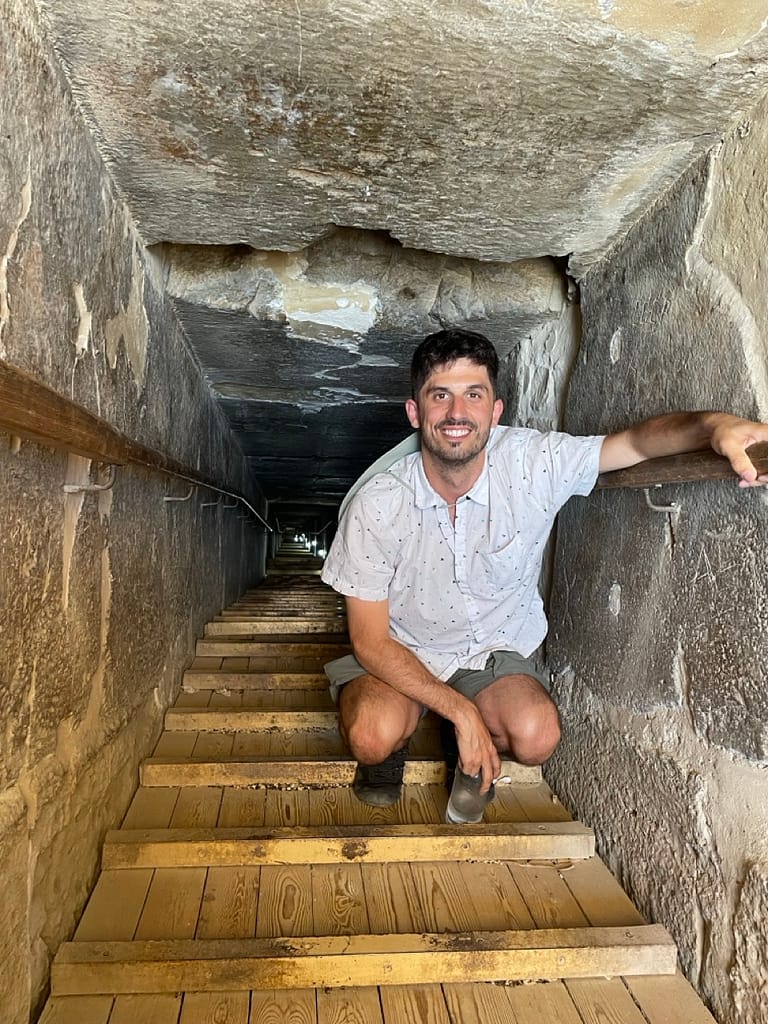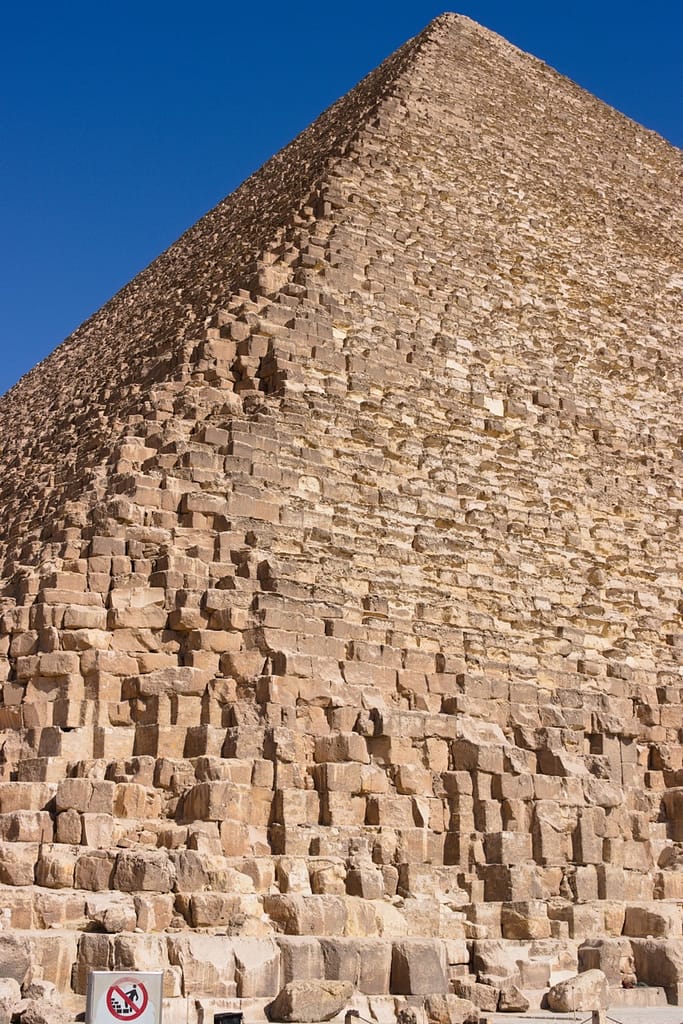Egypt has long captivated my attention, as it has for countless others around the world. Its ancient civilization created some of the most impressive and awe-inspiring structures to have ever been built. The pyramids, one of humanity’s greatest achievements, are among some of the first topics introduced in elementary school history class and when learning about ancient civilizations like Mesopotamia and the Indus River Valley. The pyramids are even featured on the back of the U.S dollar.
Mummies and pharaohs are common themes for Halloween costumes and movies like Brendan Fraser’s the Mummy and the Mummy Returns made it difficult for me to sleep at night as a kid, while Indiana Jones Raiders of the Lost Ark, inspired my sense of adventure. In sixth grade, we read The Egypt Game and then had to design a board game of our own. From first through twelfth grade, Egypt’s rich history and contributions to modern day society and civilization are recurring theme in a public school education.

I finally had the chance to Visit Egypt this past June. I spent 10 days traversing the country, from June 20th to June 30th and explored three of their major cities: Cairo, Aswan and Luxor. The journey started in Cairo, where I spent four nights before flying to Aswan for two. From there, I traveled by car to Luxor, where I spent another four nights and then my journey concluded with a flight from Luxor to Cairo and Cairo back to the U.S. Puerto Rico would be my last stop.
Cairo
Cairo, the capital of Egypt, is one of the largest cities in Africa with a population of 10.2 million (NYC has 8.25 million). It is home to the Pyramids, the Sphinx, the Egyptian Museum, the New Egyptian Museum and many other important archeological sites, like the historic capital of Memphis.
When planning my trip, I struggled with whether to stay in Cairo city, or Giza, where the Pyramids are located. Based on my research, Giza seemed inauthentic and catered to tourists, filled with souvenir shops and less safe. On the other hand, it’s the only place in Cairo where you can stay in hotels with breathtaking pyramid views. In the end, I chose to sleep amongst the pyramids in Giza.
The Hotel
I stayed at the Guardian Guest House and it was amazing. Leading up to my trip, I spent weeks researching and analyzing hotels; they all seemed so similar. I chose Guardian Guest House for what appeared to be its unmatched views of the pyramids. I wanted to wake up and fall asleep in the shadow of those ancient wonders, and the Guardian Guest House did not disappoint.
The view from the hotel room and balcony has to be the best in Giza. You are literally right in front of the Pyramids and the Sphinx. Unlike other hotels that require a special room or balcony for a decent view, this one gives you an unparalleled view no matter where you are.
The service was equally good. The brothers who ran it were fantastic and some of the kindest people I met during my time in Egypt. They helped me with anything I needed and were more than accommodating. The complementary water was a lifesaver in the one-hundred-degree summer days and nights, and the free breakfast was a pleasant addition to get you started on your days of adventure and exploration.
With that said, the area around the hotel in Giza is not the best. From the moment you walk out of the hotel, you are met with constant harassment. The police presence out front makes it feel safer, but even as a man, I did not feel comfortable walking around at night. Fortunately, there was a Pizza Hut next door and I ate it two nights in a row there for dinner because I didn’t feel like venturing out any further. I actually brought it back to my hotel and ate it on the roof.
The Pyramids
Egypt has a lot of pyramids. The Great Pyramids of Giza, of course, are the most famous, but just outside of Giza and a short drive away, there are others worth seeing, such as the Step-Pyramid of Djoser, the Red Pyramid and the Bent Pyramid. All of these iconic structures were built during Egypt’s Old Kingdom, which lasted from 2700 to 2200 BC.
Egypt’s history is divided into three major periods: the Old Kingdom, the Middle Kingdom and the New Kingdom. The New Kingdom lasted from 1550 to 1070 BC and marked the peak of Egypt’s power and expansion. This is the period of legendary names like Queen Hatshepsut, Ramses II and King Tutankhamen.
By the time of the New Kingdom, the pyramids were already ancient – thousands of years old–think about that! To the people of this time, these monumental structures already belonged to a past civilization. They were looked upon with awe, relics of a bygone civilization never to be recreated again or matched in their monumentality.
The Step Pyramid of Djoser
The Step Pyramid of Djoser was built around 2700 BC by the renowned architect Imhotep and is considered to be the first pyramid in history. This revolutionary structure marked a shift from traditional mastaba tombs to pyramid design, influencing the development of later pyramids, such as the Great Pyramid of Giza, and setting the foundation for ancient Egypt’s architectural legacy. A mastaba was a rectangular tomb with slopping sides.
Imhotep wondered what would happen if these mastabas were stacked? giving birth to the Step Pyramid of Djoser. It represents a process of discovery and invention, as the “steps” were repeatedly revised throughout the construction process. It was the first pyramid I explored while in Egypt and it was also the easiest to get into. It didn’t nearly require the effort the other two did.
The Red Pyramid
The Red Pyramid was built around 2600 BC in Dahshur and it was Egypt’s first successful attempt at constructing a true pyramid. Its design, stable structure, and reddish limestone -where it gets its name, paved the way for the Great Pyramid of Giza and served as a model for future pyramids during the Old Kingdom.
The entrance to the pyramid is located about 90 feet up the south wall. By the time I climbed the steps to reach it, I was already drenched in sweat, baking under the midday sun. At the top, I encountered a tourist who was grappling with anxiety about descending into the pyramid. Ultimately, they decided against it–a somewhat understandable decision after my own experience.
A 206-foot long, 3-foot high, 27-degree sloped tunnel with wood railings on either side and wooden floor beams at consistent intervals to prevent you from sliding leads you down into the burial chamber. Hunched over in the cramped space, I made way down, feeling the strain on my back as I occasionally scraped against the stone. It was like crab walking while hunched over; it was hard to maintain. By the time I reached the bottom, I was sweating, my legs burned, my body was exhausted and my breaths came infrequently as my body attempted to regulate itself.
It was quiet. No sound penetrated the depths of the pyramid and I was alone. Standing there, surrounded by thousands of tons of stone, it was hard not to think of the weight pressing above me. If I had dwelt on it too long, I might have ended up like the tourist out outside, paralyzed by anxiety, having a panic attack in the last place you would want one.
The Bent Pyramid
The Bent Pyramid was constructed around 2600 BC, and predates the Red Pyramid. It is also in Dahshur and not far from the Red Pyramid. What makes it unique is its distinctive shape, transitioning from a 54-degree angle at the base to a 43-degree angle near the top. It reflects early attempts to perfect pyramid construction, a process that was only perfected through trial and error. It may be tempting to think of the Bent Pyramid as a failure, after all, it’s not perfect like the Great Pyramids, but it was one of the earliest ever built and represents the time when they were transitioning from mastabas to true Pyramids, like the Red Pyramid.
If entering the Red Pyramid was an adventure, descending into the Bent Pyramid was twice the adventure. I was told that it had somewhat recently reopened after years of stabilization efforts. Its tunnel is 260-foot long, 3-foot-high tunnel, which felt steeper than the Red Pyramid’s. It was hotter than earlier and my breaths became increasingly ragged as my body struggled to cool down.
The next stretch was no less difficult. A narrow uneven tunnel, no taller than 3 feet, was the only way forward. It required me to crawl on my hands and knees. I was alone, exhausted, thirsty, and drenched in sweat. Diven by the desire to reach the burial chamber, I continued forward. The stillness punctuated only by my deep ragged breaths.
Eventually, the passage opened to a triple-height chamber with wooden scaffolding and stairs leading me up and into another passage until leading me to the burial chamber. I stood there in complete silence, alone in silence, with nothing but the former resting place of an ancient pharaoh.
The way out was the same as the way in.
The Great Pyramids
The Great Pyramids of Giza, built over 4,500 years ago, are among the most iconic symbols of ancient Egypt and human achievement. They represent the pinnacle of the Old Kingdom pyramid construction — the ideal pyramidal form.
The largest, the Great Pyramid of Khufu, was constructed using over 2 million limestone and granite blocks, some weighing up to 80 tons. Many of the stones were quarried from the limestone-rich plateau, which also provides the foundation for the pyramids. Standing at 481 feet, the Great Pyramid of Khufu was the tallest man-made structure in the world for thousands of years. Nearby is the Pyramid of Khafre, slightly smaller but notable for its preserved limestone casing at the top (something they all had) and its association with the Great Sphinx. The smallest of the three, the Pyramid of Menkaure, is unique for its use of granite in its lower layers.
It’s difficult to describe the feeling of awe when standing amongst the pyramids. They are astonishing to behold, both up close and from a distance. They dominate the landscape. Together, the pyramids and surrounding structures, including smaller queen’s pyramids, mortuary temples and the Sphinx, create a vast complex that reflects the power and beliefs of the Old Kingdom. Even on a scorching June summer morning; the plateau was filled with tourists.
I chose not to dive into the center of Khufu‘s Pyramid (something I only slightly regret) because I had already entered the two the day before and there were so many tourists, I thought that it would spoil the solitude experience. I would have hated to have been stuck in a traffic jam of people, waiting for others to move ahead. Instead, I spent my time wandering the plateau with my guide, circumnavigating the pyramids, making sure that I experienced them from every side, absorbing their majesty.
Memphis
Memphis was the capital of ancient Egypt and while it doesn’t have any pyramids, it is worth exploring, if not only because of its historical significance. It was founded around 3100 and served as a vital political, religious, and cultural center for centuries. It was the capital for over 700 years, from the Old Kingdom to the New Kingdom.
Today, in the ruins of Memphis, there is a giant sculpture of Ramses, known as the Colossus of Ramses II. It is monumental, the biggest I saw during my travels and the most impressive. Nearby stands a tiny Sphinx, known as the Alabaster Sphinx, which also happens to be Egypt’s second largest sphinx. I wonder what happened to all the sizes in between.
While the Great Pyramids of Giza are incredible, they are just one part of Egypt’s rich history. To visit Egypt and to only see Giza and Cairo would be to miss out on so much more. The country’s lesser-known pyramids and archaeological sites are equally worth seeing and deserve just as much attention and add another layer of depth to the experience of visiting Egypt.

Experiencing Egypt Part I: A Journey Through The Pyramids
Experiencing Egypt Part II: Aswan & Luxor
Experiencing Egypt Part II: An Exhausting Experience






























































Great stories & great pictures, you never cease to amaze me!!!
Pingback: Experiencing Egypt Part III: An Exhausting Experience - JourneymanJoe